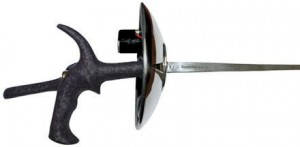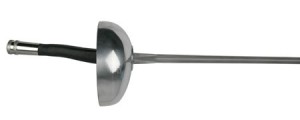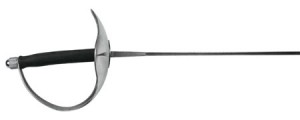Olympic Disciplines: Epee – Foil – Saber
All three weapons: foil, epee and saber are fenced on a long rectangular strip. Electronic scoring machines are used to assist in the detection of touches. The rules governing these three weapons are determined by the FIE (Federation Internationale d’Escrime). Briefly, the FIE weapons are described as follows:
FOIL: |
Descended from the 18th century small sword, the foil has a thin, flexible blade with a square cross-section and a small bell guard. Touches are scored with the point on the torso of the opponent, including the groin and back. Foil technique emphasizes strong defense and the killing attack to the body. |
EPEE: |
Similar to the dueling swords of the mid-19th century, epees have stiff blades with a triangular cross section, and large bell guards. Touches are scored with the point, anywhere on the opponent’s body. Unlike foil and saber, there no rules of right-of-way to decide which attacks have precedence, and double hits are possible. Epee technique emphasizes timing, point control, and a good counter-attack. |
SABRE: |
Descended from dueling sabers of the late 19th century, which were in turn descended from naval and cavalry swords, sabers have a light, flat blade and a knuckle guard. Touches can be scored with either the point or the edge of the blade, anywhere above the opponent’s waist. Saber technique emphasizes speed, feints, and strong offense. |
You can download the official USFA Rulebook and the Athlete Handbook from the USFA website



